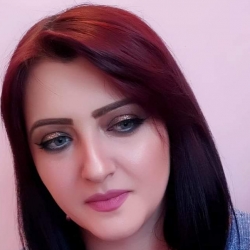

СДЕЛАЙТЕ СВОИ УРОКИ ЕЩЁ ЭФФЕКТИВНЕЕ, А ЖИЗНЬ СВОБОДНЕЕ
Благодаря готовым учебным материалам для работы в классе и дистанционно
Скидки до 50 % на комплекты
только до
Готовые ключевые этапы урока всегда будут у вас под рукой
Организационный момент
Проверка знаний
Объяснение материала
Закрепление изученного
Итоги урока

The present perfect tense
the present perfec tense is one of the widest used tense form which gives people an area to buid a speech. The present perfect is a which is used to show that an action has taken place once or many times before now. The present perfect is most frequently used to talk about experiences or changes that have taken place, but there are other less common uses as well. Read on for detailed descriptions, examples, and present perfect exercises.
Present Perfect Uses
USE 1 Unspecified Time Before Now

We use the present perfect to say that an action happened at an unspecified time before now. The exact time is not important. You CANNOT use the present perfect with specific time expressions such as: yesterday, one year ago, last week, when I was a child, when I lived in Japan, at that moment, that day, one day, etc. We CAN use the present perfect with unspecific expressions such as: ever, never, once, many times, several times, before, so far, already, yet, etc.
Present Perfect Uses
USE 1 Unspecified Time Before Now

We use the present perfect to say that an action happened at an unspecified time before now. The exact time is not important. You CANNOT use the present perfect with specific time expressions such as: yesterday, one year ago, last week, when I was a child, when I lived in Japan, at that moment, that day, one day, etc. We CAN use the present perfect with unspecific expressions such as: ever, never, once, many times, several times, before, so far, already, yet, etc.
How Do You Actually Use the Present Perfect?
The concept of "unspecified time" can be very confusing to English learners. It is best to associate present perfect with the following topics:
TOPIC 1 Experience
You can use the present perfect to describe your experience. It is like saying, "I have the experience of." You can also use this tense to say that you have never had a certain experience. The present perfect is NOT used to describe a specific event.
Examples:
- I have been to France. This sentence means that you have had the experience of being in France. Maybe you have been there once, or several times.
- I have been to France three times. You can add the number of times at the end of the sentence.
- I have never been to France. This sentence means that you have not had the experience of going to France.
- I think I have seen that movie before.
- He has never traveled by train.
- Joan has studied two foreign languages.
- A: Have you ever met him? B: No, I have not met him.
The past perfect is a which is used to show that an action took place once or many times before another point in the past. Read on for detailed descriptions, examples, and present perfect exercises.
Past Perfect Forms
The past perfect is formed using had + past participle. Questions are indicated by inverting the subject and had. Negatives are made with not.
- Statement: You had studied English before you moved to New York.
- Question: Had you studied English before you moved to New York?
- Negative: You had not studied English before you moved to New York.
Past Perfect Uses
USE 1 Completed Action Before Something in the Past

The past perfect expresses the idea that something occurred before another action in the past. It can also show that something happened before a specific time in the past.
Examples:
- I had never seen such a beautiful beach before I went to Kauai.
- I did not have any money because I had lost my wallet.
- Tony knew Istanbul so well because he had visited the city several times.
- Had Susan ever studied Thai before she moved to Thailand?
- She only understood the movie because she had read the book.
- Kristine had never been to an opera before last night.
- We were not able to get a hotel room because we had not booked in advance.
- A: Had you ever visited the U.S. before your trip in 2006? B: Yes, I had been to the U.S. once before.
USE 2 Duration Before Something in the Past (Non-Continuous Verbs)

With and some non-continuous uses of , we use the past perfect to show that something started in the past and continued up until another action in the past.
Examples:
- We had had that car for ten years before it broke down.
- By the time Alex finished his studies, he had been in London for over eight years.
- They felt bad about selling the house because they had owned it for more than forty years.
Although the above use of past perfect is normally limited to non-continuous verbs and non-continuous uses of mixed verbs, the words "live," "work," "teach," and "study" are sometimes used in this way even though they are NOT non-continuous verbs.
The present perfect continuous (also called present perfect progressive) is a which is used to show that an action started in the past and has continued up to the present moment. The present perfect continuous usually emphasizes duration, or the amount of time that an action has been taking place. Read on for detailed descriptions, examples, and present perfect continuous exercises.
Present Perfect Continuous Forms
The present perfect continuous is formed using has/have + been + present participle. Questions are indicated by inverting the subject and has/have. Negatives are made with not.
- Statement: You have been waiting here for two hours.
- Question: Have you been waiting here for two hours?
- Negative: You have not been waiting here for two hours.
Present Perfect Continuous Uses
USE 1 Duration from the Past Until Now

We use the present perfect continuous to show that something started in the past and has continued up until now. "For five minutes," "for two weeks," and "since Tuesday" are all durations which can be used with the present perfect continuous.
Examples:
- They have been talking for the last hour.
- She has been working at that company for three years.
- What have you been doing for the last 30 minutes?
- James has been teaching at the university since June.
- We have been waiting here for over two hours!
- Why has Nancy not been taking her medicine for the last three days?
USE 2 Recently, Lately

You can also use the present perfect continuous WITHOUT a duration such as "for two weeks." Without the duration, the tense has a more general meaning of "lately." We often use the words "lately" or "recently" to emphasize this meaning.
Examples:
- Recently, I have been feeling really tired.
- She has been watching too much television lately.
- Have you been exercising lately?
- Mary has been feeling a little depressed.
- Lisa has not been practicing her English.
- What have you been doing?









